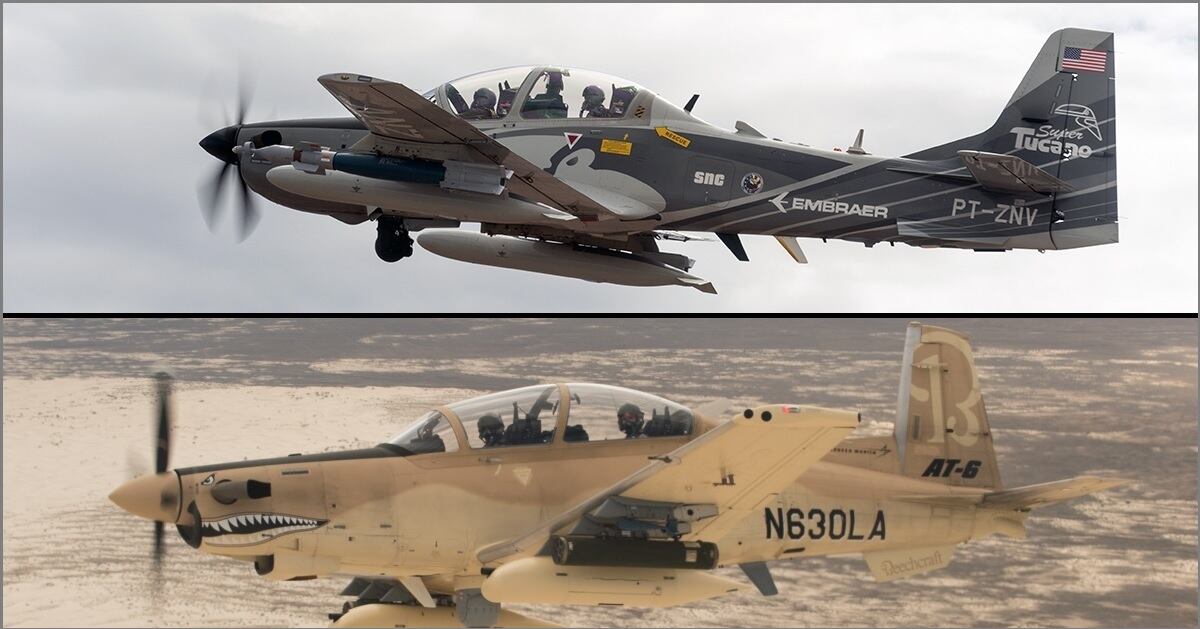WASHINGTON — Congress wants the Air Force to consider transferring some funding allocated for light attack planes to U.S. Special Operations Command — a provision that could allow the service to quietly quash its light attack efforts and allow SOCOM to step in to run a program of record.
In the fiscal 2020 National Defense Authorization Act conference report, passed by the House on Wednesday, defense authorizers told the Air Force to enhance coordination with SOCOM as it continues light attack aircraft experiments.
RELATED

Air Force Secretary Barbara Barrett and SOCOM Commander Gen. Richard Clarke “should explore options for coordinating light attack aircraft experiment activities between general purpose forces and special operations forces to maximize efficiency and effectiveness and to further the mission requirements of both forces," the NDAA conference report read.
Notably, the legislation also contains an option “to transfer a portion of funds authorized for Air Force light attack aircraft experiments to procure aircraft for supporting the combat air advisor mission of the Special Operations Command.”
For the past two years, Congress has enthusiastically supported the purchase of several hundred new attack planes for the Air Force, which would allow it to conduct counterinsurgency operations at a lower cost and potentially become more interoperable with certain partner nations in the Middle East and Africa.
Congress appropriated some $200 million to the service to buy new planes. The service, however, took a cautious approach, using a fraction of that money to conduct experiments with light attack platforms in 2017 and 2018, then shelving plans to release a request for proposals in 2019.
That perceived hesitance has led some members of Congress to blast the service for slow rolling a program of record. During a March hearing with Air Force leadership, Sen. Jerry Moran, R-Kan., criticized the Air Force’s messaging about light attack as schizophrenic. Rep. Michael Waltz, R-Fla., has threatened to give the Army or SOCOM responsibility for the program.
However, the FY20 NDAA takes a moderate approach on light attack, authorizing $35 million for the Air Force to continue its experimentation campaign. The Air Force intends to buy two or three Textron Aviation AT-6 and Sierra Nevada Corp.-Embraer A-29 aircraft for those efforts, but the serice maintains it cannot buy a large fleet of light attack aircraft unless its budget is expanded.
Nevertheless, Congress has mandated greater cooperation with SOCOM, which is bullish on light attack, rather than instructing the Air Force to buy additional planes.
If the Air Force decides to end its experimentation campaign, the provisions in the defense authorization bill now allow the service to transfer its light attack funding to SOCOM to support the command’s requirement to train foreign pilots.
“Light attack is a need for SOCOM, and I think it’s a need for our nation,” Clarke said during a House Intelligence and Emerging Threats and Capabilities Subcommittee hearing in April.
“One, it will help our special operators on the ground for identification and protection from all our enemy forces,” he said. “Second reason, as we look at the foreign internal defense of other nations, there are many nations that are now developing their own air forces, and in many cases they are light attack.”
If passed by the Senate and signed by the president, the NDAA will also compel the Air Force to make military-type certifications available to light attack aircraft manufactures so they can more easily export the planes to foreign militaries.
Valerie Insinna is Defense News' air warfare reporter. She previously worked the Navy/congressional beats for Defense Daily, which followed almost three years as a staff writer for National Defense Magazine. Prior to that, she worked as an editorial assistant for the Tokyo Shimbun’s Washington bureau.








